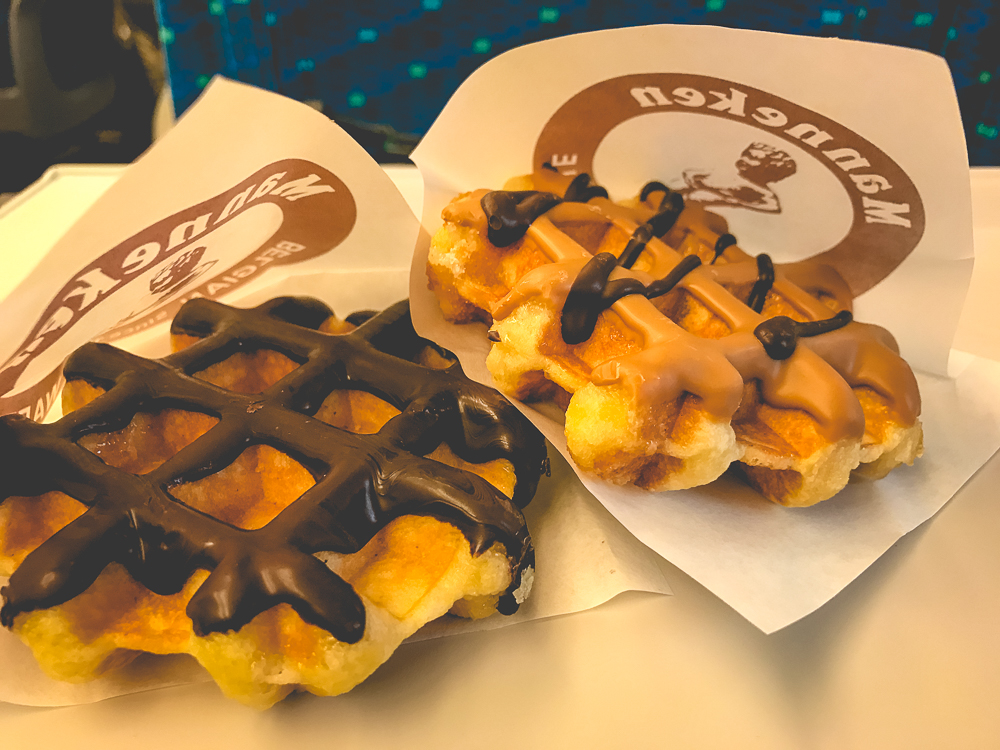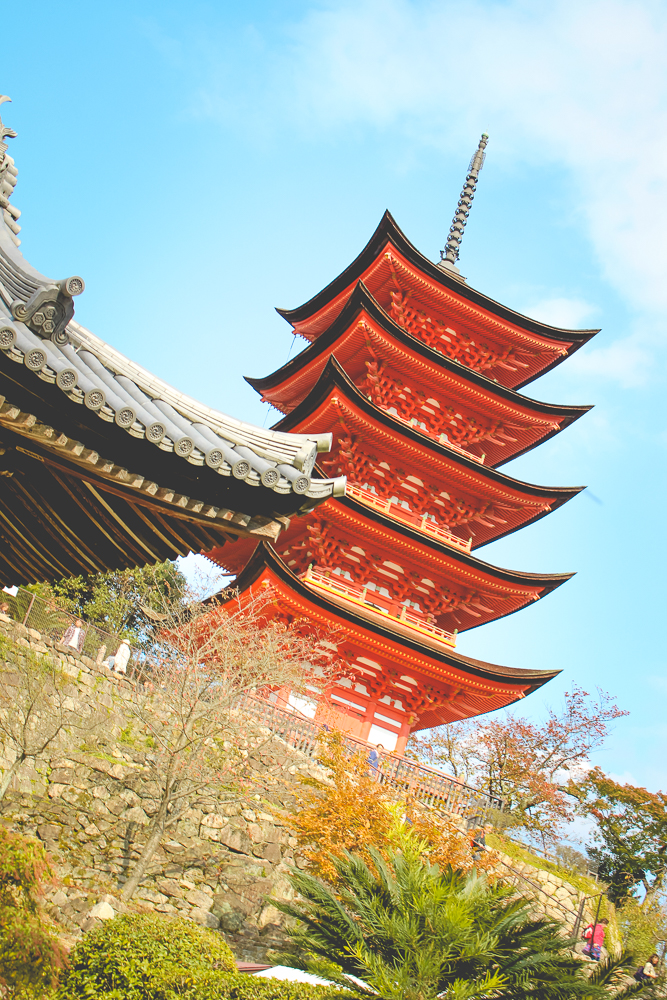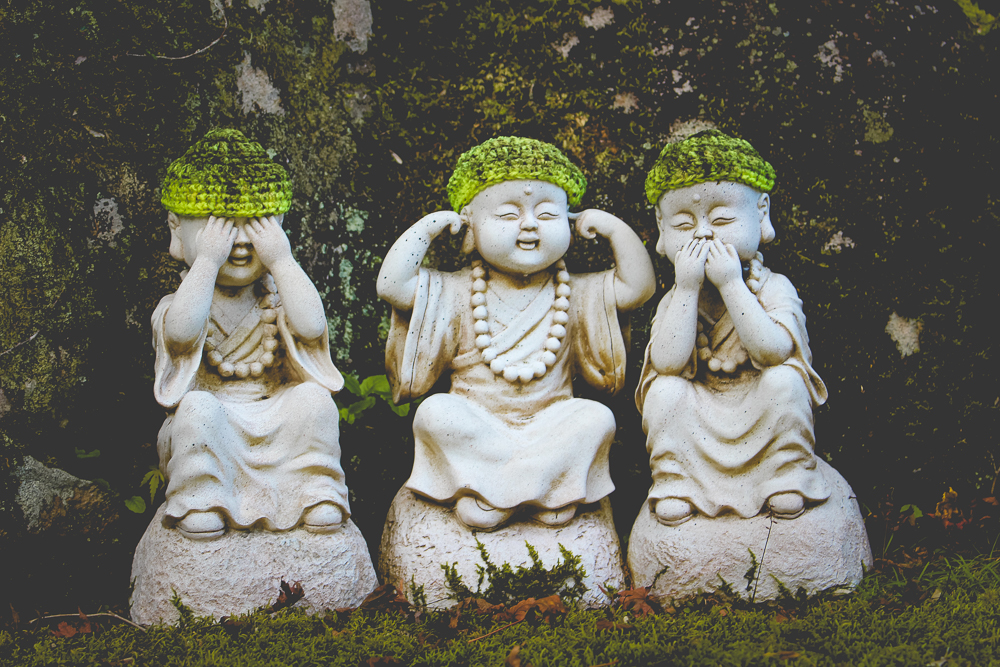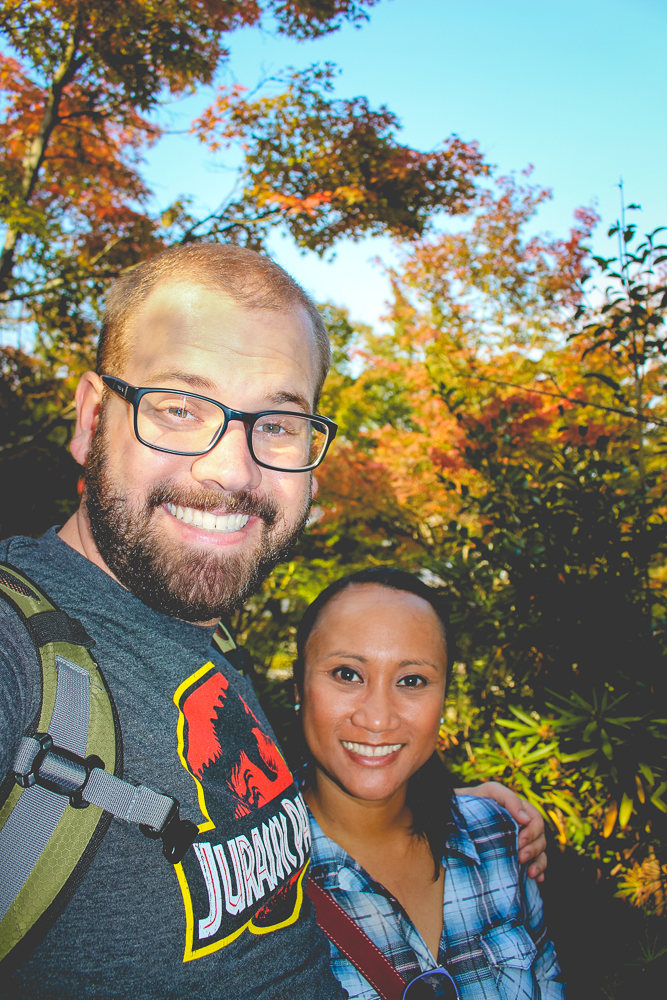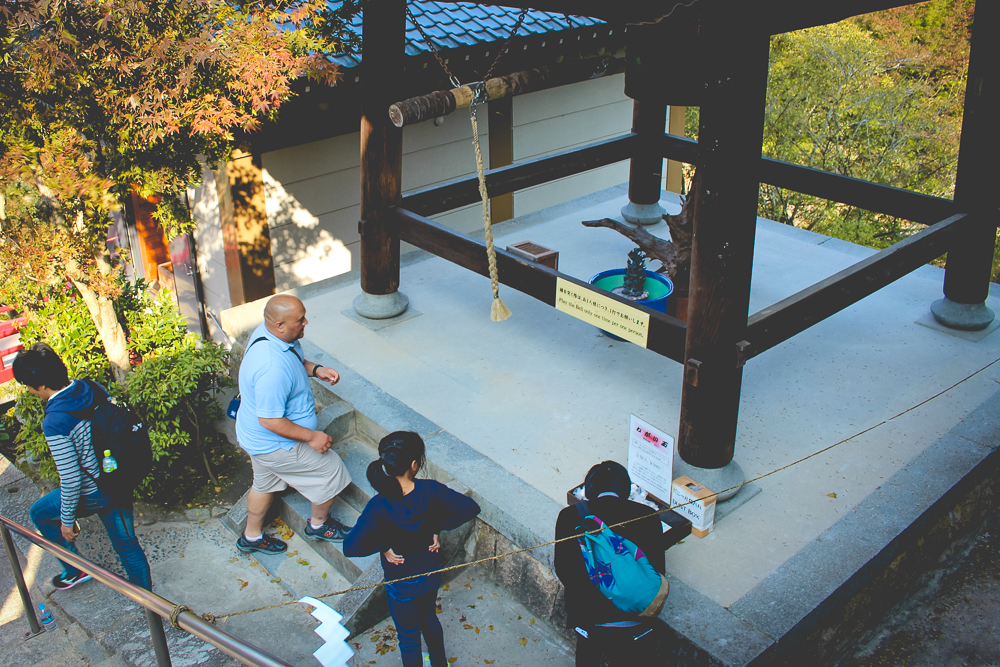Miyajima, or “Shine Island”, is the popularly known title of the island of Itsukushima, just off Japan's eastern coast. It’s classically known as one of the “Three Views of Japan”, meaning one of Japan’s most celebrated scenic vistas. With no shred of sarcasm, I must admit that my first familiarization with Miyajima has to be from the Japanese Pavilion at Epcot in Walt Disney World, which recreates the island’s famous floating torii gate in the World Showcase Lagoon. But it would be through the Canadian travelogue TV-series “Departures” that I would really get a sense of the island and its offerings (as well as learn to not hike up the island's central peak, Mount Misen!). When we were planning our trip to Japan, the island remained a source of intrigue and once booked, Miyajima would represent our destination furthest from Tokyo and our turnaround point. With its ancient shores floating over 500 miles away from Tokyo’s modern skyline, this distance would be both physical and experiential.
Our third morning in Kyoto would begin with an early city-walk to the central station and breakfast on the Shinkansen bullet train. We purchased another batch of onigiri, but the star of the morning would be the frosted Belgian waffles from a stand called “Manneken”, named after the statue of a small peeing boy in Brussels. The waffles were perfectly dipped in chocolate, maple, and my personal favorite, caramel-apple.
The Shinkansen would take us two hours south to Hiroshima, a city we would explore the following day. But for now, we would simply board an inter-city train to the town of Miyajimaguci, 45 minutes south. There, we walked down the city’s main street to the ferry docks and boarded a JapanRail ship for the island of Miyijima. It would take less than 20 minutes to deliver us to our final destination, the island of Miyajima.
Immediately off of the docks, and after being greeted by friendly islanders distributing maps of the area, we were instantly caught by one of the most unique and defining features of the island: the wild deer which roam its streets. The docile deer that famously wander through the city of Nara are also prevalent on the island of Miyajima. They are particularly tame and unbothered by the presence of the many tourists roaming the island and poking, prodding, and petting the deer (and feeding them paper!). We sought to be ethical tourists, but at times, couldn’t help ourselves but be near the deer!
Just 5 minutes from the ferry terminal, we had arrived at our hotel and dropped off our bags. From there, it was just another 7 minutes to Miyajima’s most famous landmark—one of Japan’s “three views”—the torii gate at the Itsukushima Shrine. During high tide, such as it was when we arrived, the gate appears to be “floating” over the sea (whereas during low tide, it is approachable via walking on the sandbar at its base). According to Wikipedia:
“Because the island itself has been considered sacred, commoners were not allowed to set foot on it throughout much of its history to maintain its purity. To allow pilgrims to approach, the shrine was built like a pier over the water, so that it appeared to float, separate from the land. The red entrance gate, or torii, was built over the water for much the same reason. Commoners had to steer their boats through the torii before approaching the shrine.”
From my perspective, what was most unique about the torii gate is that it was clearly a national tourist destination, highly revered by the people of Japan. We jostled side by side with scores of Japanese folks who clearly sought greater significance from the shrine than us international tourists simply looking for a pretty view.
After our shots with the red-orange pillared gate, we made our way around the Itsukushima Shrine, opting to not visit the shrine itself due to the lengthy queue formed outside its entrance. We passed around it, taking in the dining, shops, and deer which surround the famous structure.
On the southern edge of the shrine, the town of Miyajimacho disappears into the steep mountain cliffs that define the island. We followed one road a short distance into the hills before arriving at another famous Buddhist temple, the Daisho-in.
The Daisho-in, founded over 1,200 years ago, is home to many structures and is representative of Shingon Buddhism, one of the earliest sects of Buddhism in Japan. The temple is built nestled into a small ravine along the trail to the summit of Mt. Misen and is linked by sturdy stone staircases. According to Japan Guide, one of the resources I relied upon heavily when constructing the trip:
“Along the stairs is a row of spinning metal wheels that are inscribed with sutra (Buddhist scriptures). Turning the inscriptions as one walks up is believed to have the same effect as reading them. So, without any knowledge of Japanese, you can benefit from the blessings that the reading of sutra is believed to entail.”
Naturally, we turned the wheels to obtain any wisdom that can be derived through this effortless tradition.
In addition to its intricate structures and beautiful, changing autumn leaves, the temple was also home to a rather impressive bell. Once used to signal the time of day, and then for the times of worship, it is now available to tourists who are restrained enough to enjoy their one (please, only one) ring. Naturally, as a group of four, we each combined for four total rings.
The Daisho-In Temple was likely the most impressive temple we visited on our journey (on a trip full of temples!). After soaking in its steps, structures, bell, eternal flame, taiko drum, and thousands of Buddhas with knit hats, we returned to the island’s marketplace. It was now time to officially check-in to our hotel. We journeyed slowly, soaking in the sights and the crowds through the primary island thoroughfares.
Once at our hotel, each couple took turns using the elevator (we all couldn’t fit with our luggage). Absolutely enamored with the opportunity to have a complete “cultural experience” (I can’t type that without feeling a bit fraudulent, but I assure you that it’s from a positive place), the room we had chosen was a classic Japanese room, complete with thatched, woven floors, a kneeling-height table, and traditional Japanese bedding for sleeping on the floor. But for all which impressed us about our digs, what most took our collective-breath away was the stunning ocean-view, looking out across the channel to mainland Japan.
We spent the next hour or so recharging, using the WI-FI, and generally relaxing. It was from this fourth-floor perch that we would watch the most stunning sunset from our time in the land of the rising-sun.
By the time the sun had finally set, we were ready to go out and play on the island again. There was still a bit of activity out when we returned to the streets. After perusing a few establishments, we found our dinner-destination and settled in for a delightful meal. The restaurant interestingly employed an American dude who, due to his garb, we mistakenly assumed was the chef. We tried to strike up a conversation with him but, naturally as the first American we encountered on the trip, he was the first unfriendly person we had met in Japan.
By the time we emerged from the restaurant, happily full, it felt as though we were on a completely different Miyajima. Notorious for being a day-time destination, nearly all of the island's tourists were now gone and it felt as though we had the now-closing market to ourselves. Staying overnight on the island was one of the best decision we made, not only for the swanky Japanese-hotel we called home for the night, but for the opportunity to walk on the historic and sacred island at night, undisturbed.
We made our way to the famous torii gate in pitch black. Though surrounded by a thousand tourists earlier, at night there were now merely a few parties still occupying the island’s shores with us. Though not completely low tide, the waters below the shrine and gate were much more shallow than upon our last visit. This swing in the sea level left us in awe of the moon, visible brightly above, and its twice-daily drag on our planet.
As someone who works at a tourist destination that hosts tens of thousands of people daily, I was left with the distinct feeling of walking on the island outside of its operating hours—an undeniably intimate and magical time.
After struggling to obtain a few night-time photos (low light is my photographic achilles’s heel), it was time to start the slow march back to our hotel room. For the third time, we passed through the island’s main marketplace. This time, we saw the island’s shopkeepers hustling to rid themselves of their delectable cookies before their impeding closing time.
One of the unique features of the island was its mass-cookie production. Like a Krispy Creme assembly line, we passed shops with gargantuan machines in their windows mass-producing a fluffy, maple-leaf shaped cookie known as a Momiji Manju, each of which is piped with a custard-like flavored stuffing. As we walked the island earlier in the day, we could smell the magical aroma of the cookies baking and could see them sold at a premium, much like macaroons in Paris. But, late at night and on the verge of closing, the stores were selling these dollar cookies for mere cents. We were like kids in a candy shop and each picked up a batch.
Once back at our hotel, we couldn’t resist the opportunity to cap off our “Japanese cultural experience”. We used the electric kettle to brew ourselves some green tea and sat at our two-foot table, indulging ourselves on our recent cookie purchases. It was the perfect way to conclude our night. We scooted the table into the room’s corner and settled down on the floor, each couple angled 90-degrees to each other, and prepared for a night’s sleep.
We would wake up the next morning and immediately prepare for our 5 hour return journey to Tokyo via an afternoon in Hiroshima. But our short stay on Miyajima would imprint in our minds as one of the most magical destinations of the trip. I’m at a loss for words at describing how amazing the experience felt but feel as though the following video goes a thousand meters closer to summing it up than my tipsy words could:
Well, that should do it for today’s post on Miyajima. For more photos from this historic and splendid island, please check out the gallery below!:




